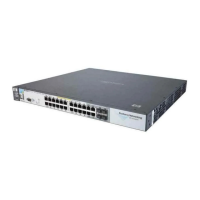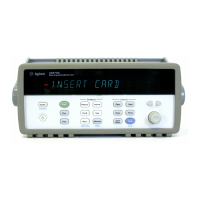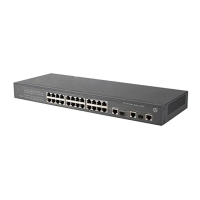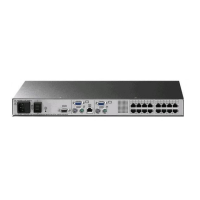6-60
RADIUS Authentication, Authorization, and Accounting
Accounting Services
For this example, assume that all other RADIUS authentication parameters
for accessing this server are acceptable at their default settings, and that
RADIUS is already configured as an authentication method for one or more
types of access to the switch (Telnet, Console, etc.).
Figure 6-20. Example of Configuring for a RADIUS Server with a Non-Default Accounting UDP Port Number
The radius-server command as shown in figure 6-20, above, configures the
switch to use a RADIUS server at IP address 10.33.18.151, with a (non-default)
UDP accounting port of 1750, and a server-specific key of “source0151”.
2. (Optional) Reconfigure the Acct-Session-ID Operation
HP Switch(config)# radius-server host 10.33.18.151 acct-port 1750 key
source0151
HP Switch(config)# write mem
HP Switch(config)# show radius
Status and Counters - General RADIUS Information
Deadtime(min) : 0
Timeout(secs) : 5
Retransmit Attempts : 3
Global Encryption Key :
Dynamic Authorization UDP Port : 3799
Auth Acct DM/ Time
Server IP Addr Port Port CoA Window Encryption Key OOBM
--------------- ---- ---- --- ------ -------------------------------- -----
10.33.18.151 1812 1750 No 10 source0151 No
Because the radius-server command includes an
acct-port keyword with a non-default UDP port
number of 1750, the switch assigns this value as the
UDP accounting port.
Syntax: aaa accounting session-id < unique | common >
Optional command to reconfigure the Acct-Session-ID mode
to apply to the accounting service type records for a given
management session.
unique: Configures the switch to use a different Acct-Session-
ID for each accounting service type. (Default setting)
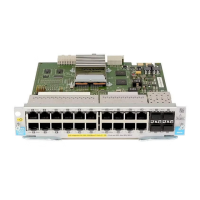
